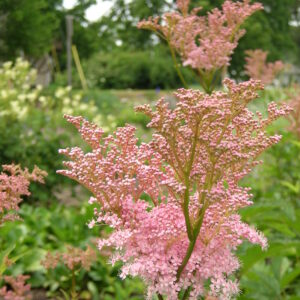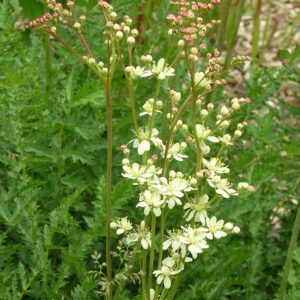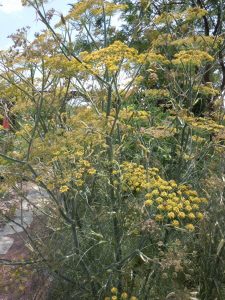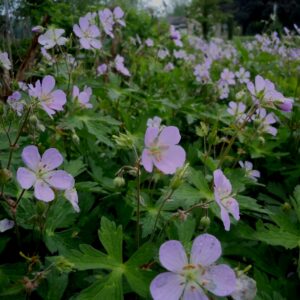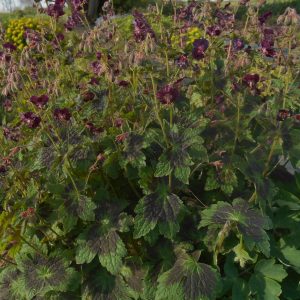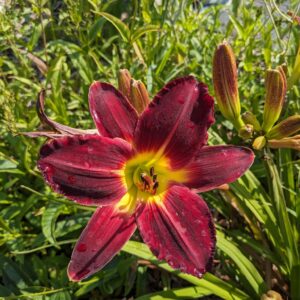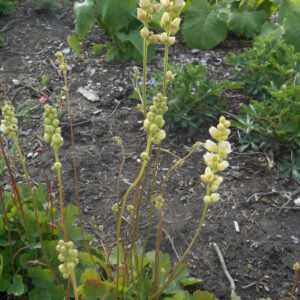Plants for Butterflies and Other Pollinators
Showing 89–96 of 211 results
-
Filipendula rubra ‘Venusta’ Queen of the prairie Z 3-9
Extraordinary frothy pink plumes, like cotton candy, blooming in midsummer
Extraordinary frothy pink plumes, like cotton candy, blooming in midsummer
Size: 4-6’ x 4-5'
Care: sun to part shade in moist well-drained to moist soil
Native: US East coast west to MN s to MO and NC, Wisconsin native
Wildlife Value: This creates pollen but not nectar limiting the pollinators to bees and flies (Butterflies and wasps want nectar.).
Awards: Award of Garden Merit from England’s Royal Horticultural Society.Name is Latin filum pendulus meaning hanging by thread referring to threads on the roots of another species.
Wildlife value: This creates pollen but not nectar limiting the pollinators to bees and flies (Butterflies and wasps want nectar.)
Meskwaki Indians used the species for heart ailments and as an aphrodisiac. Although the plant’s name has been changed five times, the species was 1st described in 1768. Robinson, Rhodora, v. 8 pp. 202-205 (1907). “Filipendulina, a New Binomial,” The flowers of this cultivar are darker than the species. Described by German botanist Andreas Voss (1857-1922). -
Filipendula vulgaris syn. F. hexapetala Dropwort or Meadowsweet Z 3-9
In early summer bundles of milk white ball-shaped buds and open blossoms atop clumps of finely-cut, fern-like leaves, both flowers and foliage fragrant, early to mid-summer.
In early summer bundles of milk white ball-shaped buds and open blossoms atop clumps of finely-cut, fern-like leaves, both flowers and foliage fragrant, early to mid-summer.
Size: 24" x 18"
Care: sun in moist to moist well-drained soil
Native: Europe, north and central Asia
Wildlife Value: attracts bees, beetles and fliesFilipendula is Latin from filum meaning thread and pendulus meaning hanging, small tubers hang by threadlike roots. In the 1600’s Nicholas Culpepper described Meadowsweet’s medicinal uses as curing bladder problems, throat, lung diseases and “the falling sickness.” Filipendula vulgaris also remedied bloated stomachs “dissolving and breaking the wind.”
-
Foeniculum vulgaris ‘Purpureum’ Bronze fennel Z 4-9
Yellow blooms on flat-topped umbels in late spring into summer, features dusky purple, feathery, compound, aromatic purple leaves with needle-like segments.
OUT OF STOCK
Yellow blooms on flat-topped umbels in late spring into summer, features dusky purple, feathery, compound, aromatic purple leaves with needle-like segments.
Size: 4-5’ x 2-3’
Care: sun to part shade in well-drained soil.
Native: Mediterranean
Wildlife Value: attracts bees and birds. Nectar plant for Swallowtail butterflies.Ancient Egyptians used fennel as food and medicine. Considered a snake bite remedy in ancient China. During the Middle Ages people hung it over doorways to drive away evil spirits. Fennel is also associated with the origin of the marathon. Athenian Pheidippides carried a fennel stalk on his 150-mile, 2-day run to Sparta to gather soldiers for the battle of Marathon with Persia in 490 B.C. The battle itself was reportedly waged on a field of fennel. Miller’s The Gardeners Dictionary, eighth ed. 1768.
-
Geranium maculatum American Cranesbill, Wild geranium, Spotted geranium Z 3-8
Clusters of two to five pink infused with lavender, flowers of five, paddle-shaped petals bloom in late spring to early summer.
Clusters of two to five pink infused with lavender, flowers of five, paddle-shaped petals bloom in late spring to early summer.
Size: 24" x 18"
Care: Full sun to part shade in moist to moist well-drained soil
Native: East North America, Wisconsin native.
Wildlife Value: primarily visited by several kinds of bees.Native Americans taught colonists to use the plant to cure diarrhea, dysentery, and hemorrhaging. Also used on sores, open wounds, canker sores and sore feet. The Choctaw prescribed it for venereal disease. Sent to Europe in 1732. Jefferson asked John Bartram to obtain seeds, 1786. Collected by French plant hunter André Michaux (1746-1802). Pressed specimen in Emily Dickinson’s herbarium.
-
Geranium phaeum ‘Samobor’ Mourning widow Z 4-9
Very distinctive, variegated, chocolate-green chevron-marked leaves. Nodding, eggplant purple flowers in late spring-early summer.
Very distinctive, variegated, chocolate-green chevron-marked leaves. Nodding, eggplant purple flowers in late spring-early summer.
Size: 12-15” x 12"
Care: part sun to shade in moist well-drained soil
Native: Croatia
Wildlife Value: Deer & rabbit resistant. Attracts butterflies and other pollinatorsOK you caught me, it’s not heirloom – this had its 34th birthday in 2024. In three decades, it will be eligible for Social Security. It’s such a wonderful plant it’s Ok to make an occasional exception. It is a natural, genetic variant found growing in damp woods in Croatia. Named for the Croatian town of Samobor where the very first ‘Samobor’ still grows. Discovered in 1990 by Elizabeth Strangman of Washfield Nursery in Kent England.
-
Hemerocallis ‘Dark Skies ’ Z 4-9
Tetraploid Daylily. Purple touched with maroon-colored blossoms. Slightly ruffled petal edges and smooth sepal edges. Green-gold eye. Blooms in July.
Tetraploid Daylily. Purple touched with maroon-colored blossoms. Slightly ruffled petal edges and smooth sepal edges. Green-gold eye. Blooms in July.
Size: 23-28” tall Blossoms 5.5” across
Care: sun in most any soilTetraploid Daylily. Purple touched with maroon-colored blossoms. Slightly ruffled petal edges and smooth sepal edges. Green-gold eye. Blooms in July.
-
Hesperaloe parviflora Red Yucca Z 6-9
Cerise scarlet trumpets up and down the flower spike in summer
OUT OF STOCK
Cerise scarlet trumpets up and down the flower spike in summer
Size: 3’ x 5’
Care: sun moist well-drained to dry soil
Native: Europe, west & central Asia
Wildlife Value: Attracts butterflies & hummingbirds. Deer and rabbit tolerant,Named by Dr. George Engelmann, a German physician and plant fanatic who emigrated to America in the early 1800’s, settling in St. Louis.
-
Heuchera versicolor syn. H. rubescens var. versicolor Pink alumroot Z 4-10
Tiny pink bells on narrow inflorescence blooming mid to late summer
OUT OF STOCK
Tiny pink bells on narrow inflorescence blooming mid to late summer
Size: 8-12” x 12"
Care: prefers part shade in moist well-drained to well drained soil, can grow in sun with moist soil. Deer resistant.
Native: southwestern US
Wildlife Value: attracts bees, butterflies and hummingbirdsFirst collected in 1904 on damp, shady bluffs of the Black Range in New Mexico, accd. to Edward Lee Greene.
The roots are astringent and can also be used as an alum substitute, used in fixing dyes. Was also used medicinally for fever, diarrhea, venereal disease, liver ailments, eyewash, colic and animal care. Heuchera is named for Johann Heinrich von Heucher (1677-1747), while rubescens means becoming red or reddish, and versicolor means variously colored.

